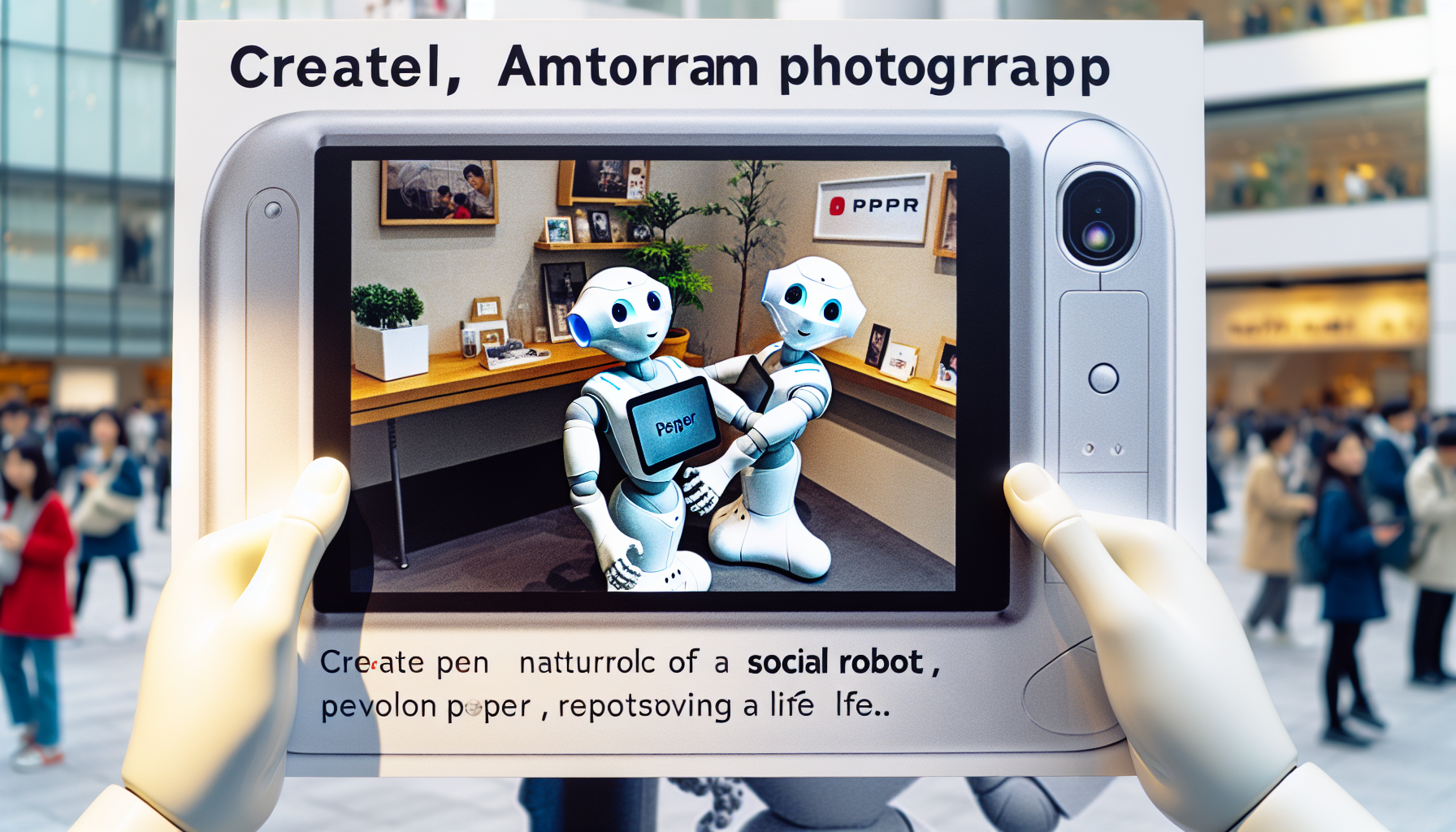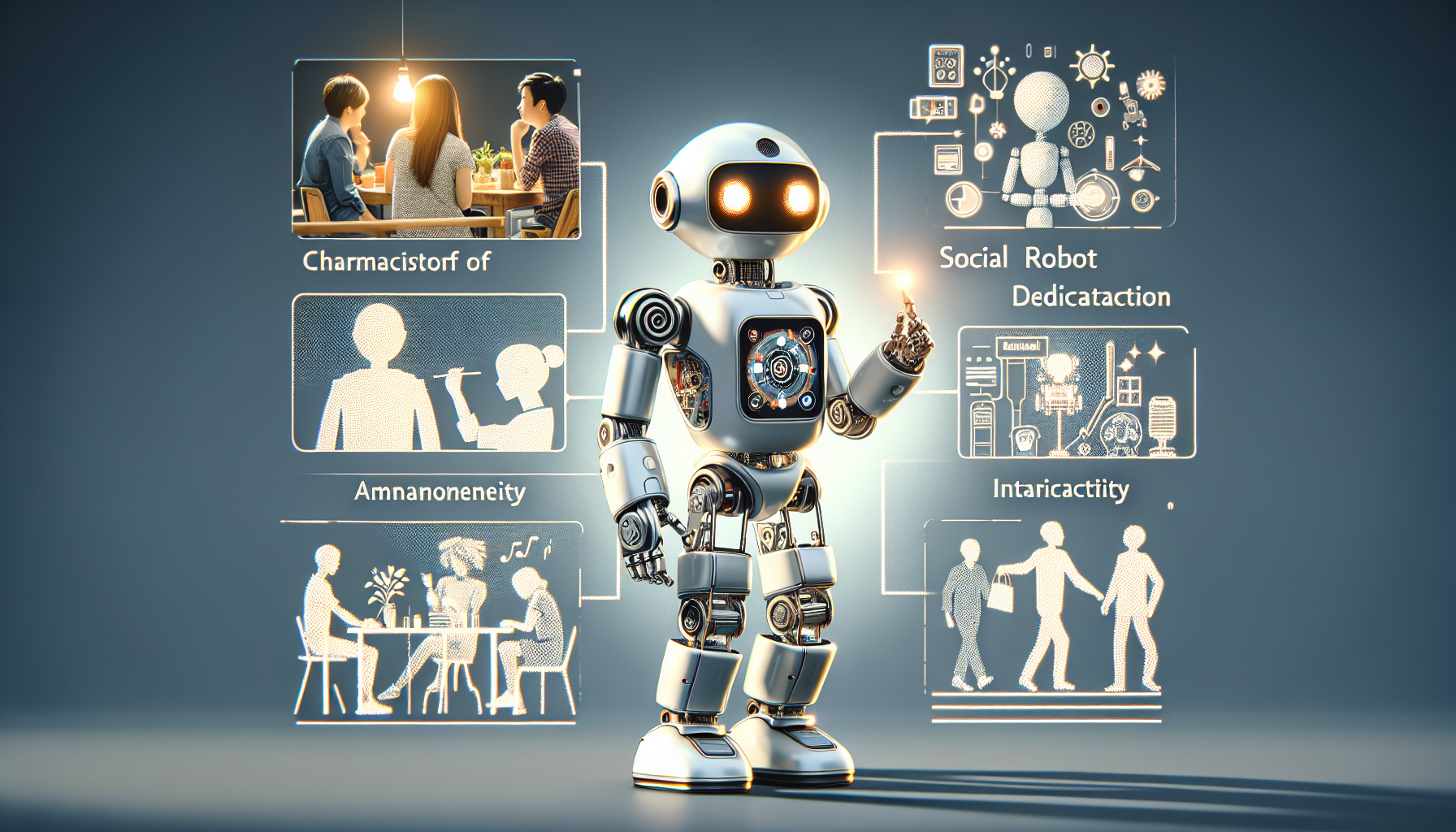Pepper: Presentation and basic functions
Summary
The social robot Pepper is a technological feat designed to interact with humans in a social environment. Equipped with numerous sensors and advanced AI, Pepper understands and reacts to our emotions while adapting to our behaviors. Through this article, we will present the basic functions of Pepper as well as its major applications in different sectors of activity.
What is the Pepper social robot?
Designed by the company SoftBank Robotics, Pepper is a humanoid robot capable of interacting with humans by recognizing and responding to a variety of emotions and behaviors. His ability to understand and respond appropriately to human behavior makes him a true social robot.
The characteristics of the social robot
Pepper stands out for his height of around 1.20 meters and his weight of just 28 kg. He has touch screens on his chest and uses the speech Recognition to understand and respond to human instructions.
In addition, it is equipped with sensors, of cameras and even a central unit to analyze the details of its environment in real time. All this allows him to identify people, understand their emotions and react accordingly.
Basic functions of Pepper
As a social robot, Pepper’s basic functions consist of interaction with humans. He can carry on a simple conversation, identify people and their emotions, move independently, and even dance! It is a tool that can be used both for to entertain and for educate.
Major applications of Pepper
Pepper has found its place in many industries. It is used in nursing homes to stimulate the elderly, in schools to help teachers educate children, in hospitals to entertain patients, and of course in businesses to welcome and direct visitors.
The social robot Pepper is a perfect example of how technology can improve and enrich our social interactions. With its ability to understand and respond to human emotions, it represents an important step in the evolution of social robotics.
Pepper’s Social Abilities

Smooth and efficient interaction
Taking a step into the future means facing Pepper, a innovative social robot standing out for its social skills remarkable. Developed by Japanese company SoftBank Robotics, Pepper is designed to understand and respond to human emotions, interact fluidly and efficiently, while adapting its behavior depending on the situation.
Emotion detection and adaptation
Pepper’s main asset is its ability to detect and interpret human emotions. Using a series of sensors, cameras and microphones, Pepper is able to understand feelings such as joy, sadness, anger or surprise by analyzing users’ facial expressions and tone of voice. Once this information is collected, Pepper adapts its behavior and responses according to the mood of its interlocutor, making the interaction more natural and pleasant.
Verbal and non-verbal communication
Compared to other robots, Pepper excels at communication both verbal and non-verbal. It understands and speaks multiple languages, allowing easy communication with users of different nationalities. Furthermore, his body movements add an additional dimension to his communication, allowing him to make expressive gestures to reinforce the impact of his words.
A wide variety of applications
By his social skills unparalleled, Pepper finds its application in many areas. It can serve as a personal assistant, a teacher for children, a companion for the elderly, or an employee in businesses to greet visitors and answer their basic questions. Thus, Pepper perfectly illustrates how robotic technology can be used to improve both our daily lives and our work environments.
Summary
Pepper, the innovative social robot, stands out for its ability to detect and interact with human emotions, communicate effectively and adapt to various situations. Its application in multiple areas demonstrates its potential to improve our daily lives and our work environments.
SoftBank: the vision and technology behind Pepper

SoftBank’s role in the emergence of Pepper
Already at the forefront of several innovations, SoftBank was crucial to Pepper’s rise. Through their significant investment in the global technology ecosystem, SoftBank has not only helped bring Pepper to market but also created the ideal environment for the growth and evolution of social robotics.
The impact on society
Thanks to the emergence of Pepper, robots are no longer confined to factories or research rooms. They have become a daily reality in our homes, our schools and even our workplaces. Pepper has thus paved the way for a future where social robots can improve our well-being, productivity and entertainment in many ways.
Conclusion: the future of social robots with SoftBank and Pepper
The path taken by SoftBank and Pepper is only the beginning of the social robot revolution. Despite challenges, such as accurately understanding human emotions or establishing ethical standards for human-robot interaction, the future looks bright. With companies like SoftBank at the forefront of this revolution, we will soon live alongside increasingly sophisticated and emotionally intelligent robots. A fascinating future full of potential awaits us.

Leave a Reply